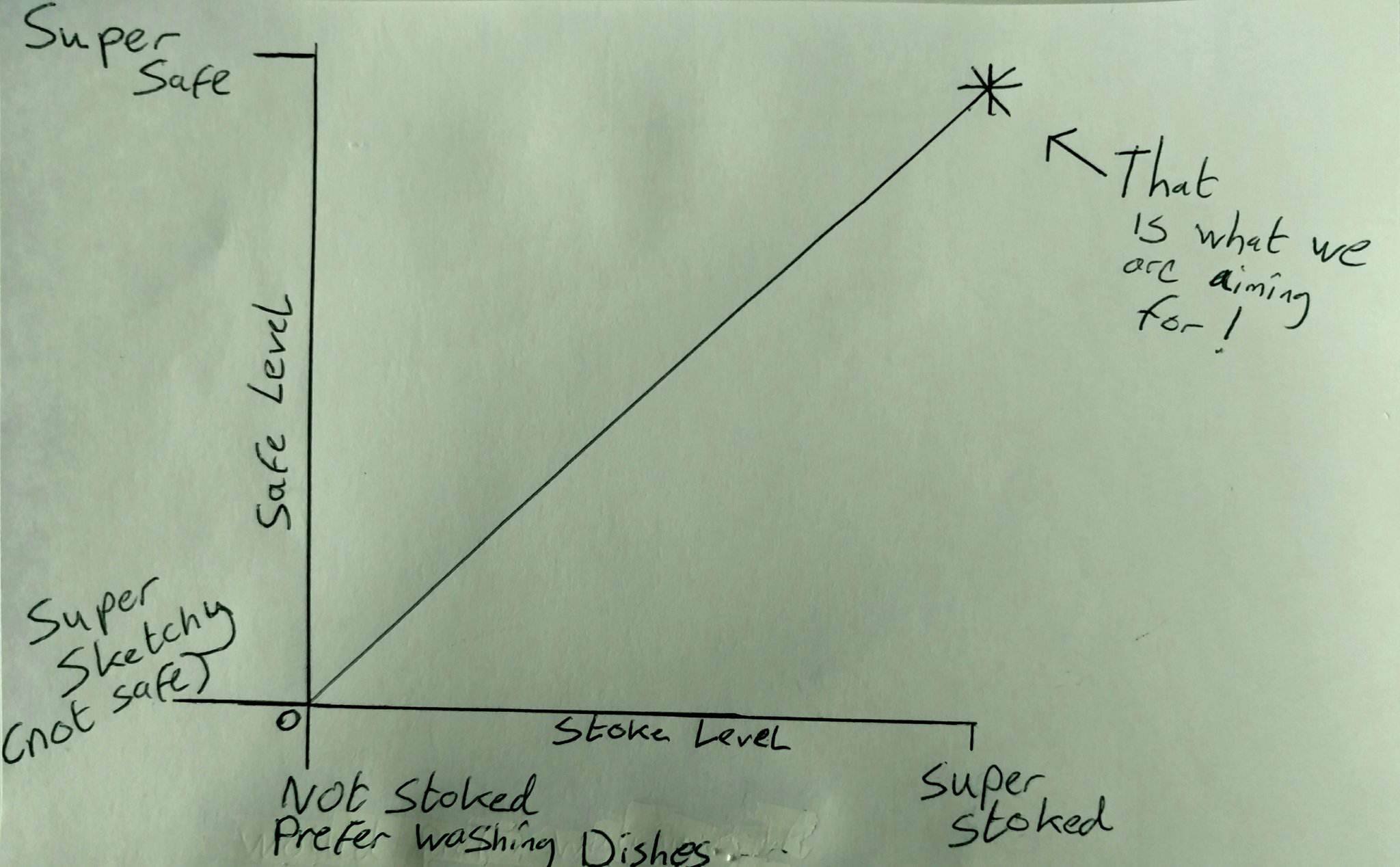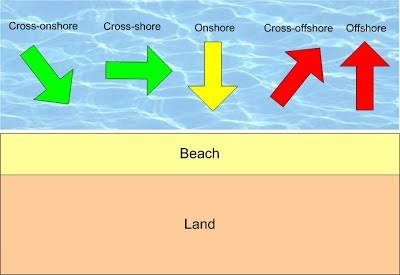Kitesurf Tips and Tricks No4 Site Selection, Launching and Landing

From flat shallow waters to wave spots delivering decent swell we are blessed with world class riding conditions here in Grand Cayman. However what we lack are open spaces to launch and land our kites which create a dangerous ( sketchy ) launching and landing environment, in this blog we will look at some tips to make your sessions and riding safer thus resulting in increased stoke levels.
Wikipidia – Safety is the state of being "safe"
Now we have established what safety is, look at this chart !
So it is clear, increased safety results in higher levels of stoke, so how do we achieve this ?
Site Selection
When arriving to a location, regular spot or new it is important to carry out a site selection, beginners should mindfully carry out an exercise like this and over time it will become second nature. A site selection is a overview of environment and conditions such as . . .
Wind speed, Wind direction, Water condition, Current, Other water users, Obstacles upwind and downwind, launching space, other riders ( help if required ) the list goes on.
Lets start with wind speed, this will dictate what equipment you will opt for. If there are other kite surfers riding, spend five watching their kites ( look at what sizes other riders are using ) If they are S turning their kites ( power strokes ) they will be underpowered, if their kites are parked and delivering a steady pull the rider will be powered. This can help when selecting what size to go out on. If you only have one kite for example a 12m and other riders are using 7m’s perhaps its not the day for you . . .

Wind direction is equally important as it can dictate if conditions are safe or no to go out in, and can completely change the riding geometry of a location. Cross shore and Cross onshore are the safest wind directions to fly in. Onshore winds can provide challenging conditions for beginners as it is harder to create distance between the rider and shoreline ( onshore conditions will test the riders upwind skills ) and finally off shore conditions are best left alone ( unless you want a long cheap trip to one of the sister islands ) ass downwind will drag you directly away from the land.
If you are no familiar with wind direction and this terminology please view image below.
Lets continue with Water Condition, this can be impacted and changed on a daily basis due to wind direction, swell and current. Certain days you may notice the riding environment to be particularly choppy, perhaps even waves are breaking where they don’t normally, objects are floating ( driftwood for example ). If this is the case, if in doubt don’t go out.
Current is the invisible force that not many are aware of, if the current is moving in the same direction as the wind this will take power out of your riding speed and can easily take you on a downwind decent, however if the current is flowing in the opposite direction ( can happen but quite rare ) this can result in being very powered. Tip – watch the movement and flow of the water and if unsure ask other riders.
Other water users depending on where you are riding on the island or in general, you will find there to be different levels of other water users or water traffic, as a rule of thumb keep good distance ( at least two kite line lengths ) and give priority.
Obstacles upwind and downwind are very important to factor in ( dependant on wind direction ) the shoreline being the biggest factor when looking downwind at most locations however, other water users, docks, coral heads, water based signs and poles also are worth keeping an eye out for. Upwind obstacles can create wind shadow and turbulent winds, the ratio for wind shadow being 1-7 so each foot of clearance will cause 7 feet of wind shadow downwind. Kitesurfing downwind of cruise ships is not advised ! when it comes to turbulence we require at least 100 ft worth of clearance before the wind starts to smooth out. It is worth looking all around you when arriving to a location to see whats going on.
Launching space, most beaches here in Cayman provide small launching spaces, it is advisable to do sea side based launches ( depending on wind direction ) you will launch your kite on the side of the window thats closest to the shoreline so if the kite powers up it will drag you into the water opposed to into the land ( that hurts ) and visa versa when landing make sure you being your kite down land side and have someone to grab your kite ( or self land in lighter winds ). If there are other riders around there is no reason to self launch or self land.
To Finnish of with, arguably the most important Other riders or help, There might be a reason no one else is riding, if there are others out ask how their session has been, ask what the winds like and what size kite they where on, having others around you also acts as support if you find yourself in trouble. If no one is out and your in doubt, again don’t go out. Also having help around, this can be locals, friends or family or other riders, these can assist when launching and landing and will serve as a spare set of hands if your session takes a turn for the worse.
Tip – Talk to locals and other riders, often they will have the best knowledge when scoping a new location. Kitesurfing is all about fun, a good site selection can take 5 minutes and can drastically reduce the chances of anything happening. Kitesurfing is also a sport with countless variables, some can be influenced and controlled by riders and some simply cannot. Take your time, use your eyes and ears and make the most of your water time by incorporating these tips into your session.
Any questions give me a holler
ta
Jamie
